Resolving LED Strip Flickering Issues: Troubleshooting Guide
Table of Contents
LED strips have become an integral part of our everyday lives in our technologically advanced society. With their versatile applications in various settings – be it to spruce up our homes, provide lighting solutions for professional settings, or contribute to the ambience at social events – these slender, flexible light sources have transformed how we illuminate our world.
However, LED strips are not immune to issues and challenges like all electronic devices. One of the most common problems that users encounter is flickering. A flickering LED strip can be an annoying distraction, but more importantly, it can also signify underlying electrical issues that need to be addressed.
In this comprehensive guide, we delve into the heart of the problem, exploring the possible causes and effective solutions to flickering LED strip lights. Whether you’re dealing with occasional flickers, a pulsating light, or a LED strip that seems to have a life of its own, this guide is designed to equip you with the knowledge and tools to address these issues. By understanding what triggers these problems and how to fix them, you’ll be able to enjoy a seamless, uninterrupted, luminous experience while extending the life and performance of your LED strips.

Varieties of Light Flickering
Light flickering is characterized by a rapid turn on and off of a light source. While it can be purposeful, as seen in nightclub or concert lighting effects, it is typically an unwanted annoyance.
Two main categories of flickering exist: visible and invisible.
Visible flickering occurs at a frequency below 100 Hz (meaning it happens 100 times per second or less), and as the name suggests, it can be seen by the human eye. On the other hand, invisible flickering happens above this frequency and cannot be perceived by our eyesight, though it is still present. Both types of flickering can lead to health issues such as dizziness, eye strain, headaches, migraines, and cognitive impairment. Visible flickering also potentially triggers seizures in individuals diagnosed with epilepsy.
Reasons Behind LED Strip Light Flickering
Several reasons can lead to the flickering of LED strip lights. Here are some of the common causes:
Causes of Visible Flickering
Mismatched Components
This typically occurs when the LED strip has a dimming feature. Verifying that your LED strip and its driver are dimmable is essential. Furthermore, the dimmer and driver protocols should be compatible. For instance, you cannot use a 0-10V dimmer with a DALI dimming driver.
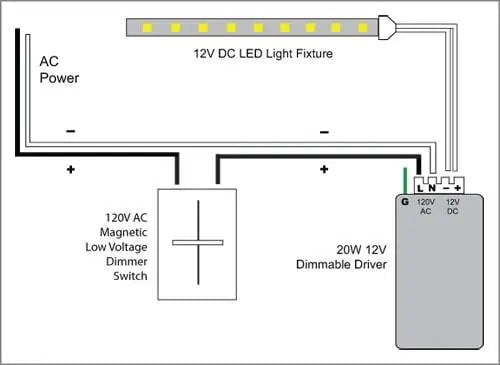
Poor Connections
Flickering tends to begin or worsen significantly after a connection is made. This mainly arises from unreliable, inconsistent, or intermittent connections that can initiate flickering by inconsistently making and breaking circuits. Such issues predominantly occur in solderless connectors and are less likely to happen with soldering.
Pressing the solder-free connector can sometimes change or even remove the LED strip flicker.
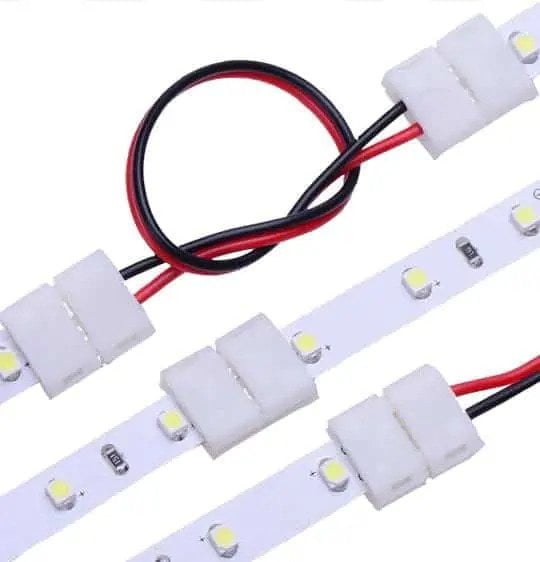
Overburdened or Faulty Power Supply
An overloaded LED driver is one of the primary culprits behind LED strip flickering. LED drivers usually come with overload protection. When overloaded, the LED driver continually switches on and off, which in turn causes the LED strip to do the same, resulting in what appears to be flickering. A faulty LED driver can also lead to LED strip flickering.
Malfunctioning LED Strip
Sometimes, a defective LED strip can lead to flickering. This usually happens due to a poor connection between the LED chip and the holder.
For instance, consider the internal structure of the SMD LED beads. The LED chip is the light-emitting part linked to the LED holder via a gold wire. If the connection between the LED chip and holder is unstable, the current may occasionally pass through, causing the LED to flicker.
Compared to SMD LEDs, CSP and COB LEDs lack gold wires, thus avoiding this issue.
There might also be a situation where the LED beads and PCBs are poorly soldered. If a specific section of the LED strip is blinking, pressing this part of the LED may change or eliminate the flicker.
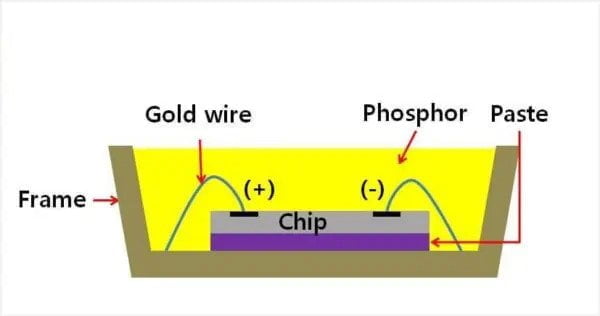
Unseen Light Fluctuations
You may notice peculiar vertical lines in your smartphone camera’s images or perceive strobing in moving objects. This odd occurrence stems from an unseen strobing effect.
Fluctuating AC Power in LED Strips
The primary reason for light flicker lies in the alternating current (AC) that transmits most of the world’s electricity. As the term suggests, AC continually changes its flow direction at 50 to 60 reversals per second, typically forming a sine wave. In contrast, direct current (DC) remains constant, flowing continuously in a single direction.
Whenever the current reverses, any device connected to the line experiences a momentary power loss, causing lights to flicker. This principle explains why AC power LED strips often display a flickering effect.
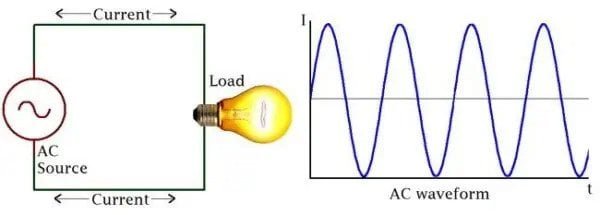
Invisible Fluctuation through PWM Dimming
Pulse-width modulation (PWM) dimming engenders unseen flicker.
PWM represents a strategic alternation of DC power between active and inactive states. By altering the relative durations of these states, PWM can simulate different brightness levels. However, the LED is either fully off (0% brightness) or completely on (100% brightness). To create an illusion of 50% brightness, the LED remains off half the time and on the other half.
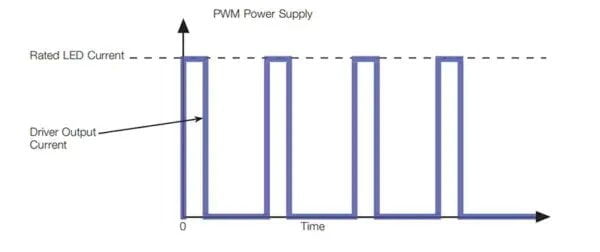
While this flicker is usually undetectable to the human eye, it can be detrimental when filming. The discrepancy between the camera’s frames per second (FPS) and the electricity frequency can result in more noticeable flickers in videos, known as the ‘strobe effect’.
Most LED strip dimmers and “colour-changing” controllers (such as CCT or RGB) employ PWM on the circuit’s low-voltage DC side to achieve their desired results. However, many of these controllers use frequencies too low to be effective. Ideally, a 25,000 Hz or above frequency should be used to counteract the PWM flicker. Unfortunately, most dimmers don’t specify their PWM frequency, usually indicating that they operate at least a few hundred Hz.
How To Address the Issue of LED Strip Lights Flickering?
The following solutions will aid in preventing your LED strip lights from flickering.
1. Visible Flickering
Examining the Connections
As an initial step, it is essential to scrutinize all the connections, encompassing wires, connectors, and LED drivers, to ascertain they are in optimal condition. Faulty connections can generate excessive resistance, lead to overheating, and even initiate a fire hazard. This issue will also result in the LED strip flickering.
Switching Out Incompatible Components
Replacing incompatible parts, such as dimmers, LED drivers, etc., is necessary as a second measure. The components most prone to incompatibility are dimmers and LED drivers.
Swapping the LED Driver
If your LED power supply is faulty, replace it or opt for a higher-wattage power supply.
It is important to remember that using multiple LED drivers to power a single LED strip is not feasible when the LED driver’s power is lacking. This is due to the varying start-up times of LED drivers. Without sufficient power, the initial driver will trigger overload protection, causing it to shut down and restart. This cycle will persist with all the drivers.
Replacing Defective LED Strips
Finally, it is imperative to replace the malfunctioning LED strip. Once you’ve confirmed that the connections are secure, all parts are compatible, and the LED driver is functional, the last resort is to change the LED strip.
2. Invisible Flickering
Utilizing Low Voltage DC LED Strip Lights with LED Drivers
Opt for low-voltage LED strips and high-quality LED drivers whenever possible. LED drivers convert high-voltage AC into steady low-voltage, preventing the LED strips from flickering.
Employing Dimming Power Supplies with CCR Output Signal
Dimming power supply output methods primarily come in two forms – Constant Current Reduction (CCR) and Pulse Width Modulation (PWM) (also known as Analog Dimming).
In CCR, the LED always remains ON with a continuous flow of current, unlike in PWM, where the LED constantly switches ON and OFF. The LED’s brightness is then altered by varying the current level.
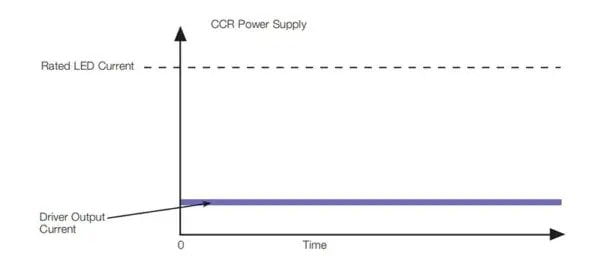
Using Dimming Power Supplies with High-Frequency PWM Output Signal
In PWM, the LED rapidly switches ON and OFF at its rated current at a high frequency. This quick switching is too fast to be detected by the human eye. The duty cycle, or the ratio of the time when the LED is ON to the total time of one complete cycle, determines the LED’s brightness level.
The higher the frequency of the PWM observed by the camera, the lesser the likelihood of flickering. If the frequency exceeds 25 kHz, the camera won’t detect flickering.
Conclusion
Dealing with flickering LED strips can be exasperating, but several straightforward solutions are available to resolve this problem. From inspecting the power supply to substituting faulty components, these troubleshooting steps will help you identify and correct the source of the flickering. Moreover, taking preventative measures like using high-quality components and ensuring your LED strips are properly secured can aid in completely avoiding this issue.
MyLikeLed is a leading manufacturer of superior LED strips and LED neon flex. Our products undergo rigorous testing in high-tech laboratories to guarantee the utmost quality. Additionally, we offer customizable options on our LED strips and neon flex. Therefore, for top-tier LED strips and LED neon flex, reach out to MyLikeLed immediately!
FAQs
Your LED strip is flickering most likely due to inconsistent power supply. This can be caused by a faulty power adapter, loose wiring, or incompatible dimmers.
Replace the power supply with one that matches your LED strip’s voltage and wattage. A weak or incorrect power source often leads to flickering issues.
Yes, incompatible dimmers can cause flickering. Always use dimmers specifically designed for LED lights to avoid performance issues.
Yes, loose or poor-quality wiring can lead to flickering. Check all connections and ensure wires are properly secured and not damaged.
No, LED strips should not flicker when working properly. A brief flicker at startup might be okay, but ongoing flickering signals a problem.
Yes, adding a capacitor can help in some cases. It smooths out voltage fluctuations and may resolve minor flickering issues.

Hi, I’m Xylia Xiong, a sales professional with 14 years of experience in the LED strip light industry. I specialize in providing tailored solutions, leveraging my expertise in LED products and the latest industry trends. Known for effective communication and problem-solving, I’m dedicated to helping lighting manufacturers, importers, and distributors achieve their goals.
Let’s work together to create customized solutions that exceed expectations.
Related Posts

The Best LED Strip Lights You Can Buy Right Now

Comparing WS2811 Vs WS2812B: Key Differences


